You will agree, Swing DJ'ing is much more than just playing a prepared playlist, even if you have put a lot of effort into finding great danceable songs.
So, what's the secret sauce? What distinguishes successful Swing DJs from less successful?
Recently I asked popular Swing DJs from all over the world one question:
What is your favorite (uncommon) tip/trick/advice for successful Swing DJ'ing?
A compilation of 27 great quotes is the result.
Some answers are short, some are long, some are similar, some are controversial, but they all have one thing in common:
They will help you to be a successful Swing DJ.
Mary Freitag (USA)
Love the music, and read/learn constantly about what music inspired the original dancers and musicians so you can make wise and informed choices to inspire those you play for!
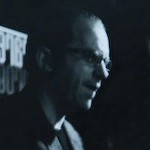 Andy Lewis (UK)
Andy Lewis (UK)
As a DJ, don't just sit there playing music. Own that dancefloor. Take ownership of it, engage with it and the dancers, give it what it needs, nurture it, feed it, care about it. Make it yours.
 Kyle Smith (USA)
Kyle Smith (USA)
Play the music you like.
 Trevor Hutchison (Australia)
Trevor Hutchison (Australia)
Chances are, you are a swing dancer too. Trust your instinct and play what makes YOU want to dance. Listen to your music during the week while you do other things and if you find yourself tapping your foot, there's a good chance other dancers will love it too!
 Abigail Browning (USA)
Abigail Browning (USA)
Two things:
If I find that people are hunkered down sitting and chatting on the sidelines, I put on a great song and turn the volume up just a little bit (barely enough to detect) to signal a psychological desire to follow the music and get on the floor.
To start a jam, often I will play a series of mid-tempo, high-energy songs (~160 bpm) followed by a group routine dance song (like the Big Apple) to get people in the mood to be in performance mode and heighten energy. Then I play a song that keeps the energy going (Lindy Hopper's Delight or Jumpin at the Woodside always works, but I usually pick something different) so that the people stay in the middle and start a circle.
 Jered Morin (Germany / USA)
Jered Morin (Germany / USA)
1 ) Always smoothly transition between styles/tempos; the dancers get comfortable you're in control.
2 ) But sometimes DON'T; otherwise your set sounds like one long song.
 Mel Calanglang (UK)
Mel Calanglang (UK)
Preparation and Flexibility Have a list of songs with key metadata (i.e. BPMs, genre, your own category and rating) ready for your set. You don't have to play the song in the order of the list, and it good to build the set based on BPMs the energy of the song. Most importantly, be prepared to deviate from playing this list on the night, depending on the atmosphere and how the audience is receiving the song.
 Jesse Miner (USA)
Jesse Miner (USA)
Preview your music! Get a good set of headphones and a sound card with dual outputs (if using a laptop), and listen to each track immediately before playing it. No matter how well you know your music, a brief preview will remind you exactly how the track begins and ends, the type of energy it will bring to the room and if it will be a hit or a miss.
Website | Hey Mister Jesse Podcast | @jesseminer | Facebook | FB Hey Mister Jesse
 Laurent Meirieu (France)
Laurent Meirieu (France)
The rules I try to follow:
- Do not prepare more than two songs in advance. Because you don't know in advance what is the mood of the dancing crowd.
- Do always give some glance on the dancefloor, even if you are looking for a new track to play: if there are too few people dancing, change something in your selection.
- And of course play for the dancers, not for you. And play for the most of them, not the best of them.
- Contrast your selection: for example playing all your “best” songs is not a good idea. Sometimes, it is very efficient to play a banal song and create a contrast with the next one. Dancers are passionate people, it is very easy to get them bored.
A DJ (swing or any other kind of music) is a perpetual self-questionning, finally 🙂
Website | Facebook
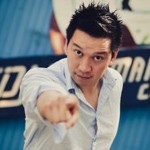 Mark Kihara (USA)
Mark Kihara (USA)
Try not to outsmart history. That is, the most famous bands of the day were famous for a reason. Ask the old timers and they all say their favorite band was Count Basie. This is not a coincidence.
 Mitya Kuznetsov (Russia)
Mitya Kuznetsov (Russia)
Play more big bands of swing era. Not a big deal you can say. Yes, may be, but DJs who plays a lot of big bands music always look good. Because big band swing is great for swing dancing. Of course there are a lot of other styles of jazz we can dance on, but the golden era of swing dancing was also the golden era of big band swing. And the dance matches to this music perfectly. So if you are in trouble or not in the mood just play some of good old big band swing. And the dancers will be thankful.
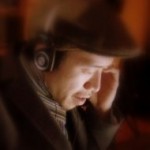 Shorty George (Turkey / USA)
Shorty George (Turkey / USA)
Small local jazz bands are a great source of new music. I always pick up a CD from them, regardless of whether I know if the whole CD is good or not. If you get just one song that's good (my litmus test is that dancers are smiling at the end of the song), it's still worth the purchase. Usually the CDs go for 10 Euros or cheaper. At the end of the day, you will have that ONE song that very few people have, therefore making your DJing more unique.
 Stephan Wuthe (Germany)
Stephan Wuthe (Germany)
- keep 'em dancing
- interact with the dancers (think that you are the band playing and inviting the dancers: you are Chick Webb, you are Teddy Stauffer, you are Alix Combelle, you are Ken ‘Snakehips' Johnson, you are Thore Ehrling, you are Eddy Rosener… all at the same time)
- try to find unknown versions of well known tunes
- try to find unknown artists doing famous tunes
- find something individual that makes you kind of unique (proper style of music)
- conclusion: be a nice surprise even for your ‘family'
 Morgan Day (USA)
Morgan Day (USA)
Prepare a list of songs that always fill the floor. During your DJ set, if you feel the energy in the room go down, or play a song that just doesn't get people dancing, pull out one of these songs after to make a strong come back.
 Henrik Eriksson (Sweden)
Henrik Eriksson (Sweden)
A DJ's most fundamental task is to find music that is so irresistible and inspiring that people have no choice but to move their body.Music that creates feelings that are so strong that it compels them to express their emotions physically. Everything else is secondary.
 Laura Windley (USA)
Laura Windley (USA)
If you are DJ'ing the band breaks, don't overshadow the band. Your job is to compliment what they are doing, not come in like gangbusters at the beginning of your set or go out of your set with a bang. A good DJ will create a seamless transition from the band to the DJ'd set and back again, without sacrificing energy.
Website | @LindyShopper | Facebook
 Juste Buzelyte (Lithuania)
Juste Buzelyte (Lithuania)
Surprise yourself too!
 Ryan Swift (USA)
Ryan Swift (USA)
My favorite tip/advice shouldn't be uncommon but unfortunately, it is: Watch the floor! You'll learn a lot and the dancers will tell you what will keep them dancing.
Website | @ryanswift | Facebook
 Jamie Cameron (UK)
Jamie Cameron (UK)
For me it's not so surprising that the old school music which actually inspired the birth and growth of Lindy Hop works really well for… Lindy Hop! And pay close attention to tempos – I'm not afraid of faster songs but you have to take people there and bring them back down afterwards. I want everyone in the room to be able to dance to every song in my set without a break, if they want to.
 Mindaugas “Deeb” Bikauskas (Lithuania)
Mindaugas “Deeb” Bikauskas (Lithuania)
I guess the most important is to be honest with the dance. If the song swings – you better play it. If you hesitate that it would fit to the dance… well you can always experiment, but if you want to be successful, experiment on your own to get the idea if it works. For crowded dance floors I try to DJ songs that I'm sure with. Tricks. I don't use tricks. I just try to play good music. Big apple, Shim Sham, Trunky Doo and Jam circles in my opinion is a cheesy way of getting audience attention. Just play well. Leave all these tricks for live bands 🙂
 Nathan Malone (USA)
Nathan Malone (USA)
I am a big believer in using the MP3 tag field to organize collections, in particular the comments field. You can put a lot of information in the tags and build very effective playlist that search on key words and combinations of key words. In addition the obvious (beat per minute, styles of dance the song fits, genre of music), you can search on things such eras, musical instruments, male/female vocals vs instrumentals, region song came from, lyrical content, pretty much anything you can dream up. The best thing is the tags stay with the file, so as you change computers/systems, all you have to do is rewrite the search queries, which usually does not take long.
 Greg Avakian (USA)
Greg Avakian (USA)
I've heard DJs pass the idea along that you need to “showcase” the band. Or showcase “Swing Music” as a genre or idiom. I totally disagree. You need to kick the band's ass and you need to keep the dancers on the floor. The rest is philosophy and abstraction. At the end of the night, you want everyone to say “the band was great, but I totally loved the DJ.
 Janne Börjesson (Sweden)
Janne Börjesson (Sweden)
We can stand listen to the same band playing live for a long time. So… Don't be afraid to play the same artist for three, four or even five songs in a row.
 Michael Gamble (USA)
Michael Gamble (USA)
Don't overcomplicate the process by getting caught up in hardware, software, technique, and philosophy issues; find genuine swing-era music, know your collection, pay attention to what works (and which dancers it's working for) and above all be humble.
 Haydn Meddick (UK)
Haydn Meddick (UK)
I think one reason why people like swing music is that it makes them feel playful. My tip for swing DJing is to choose music that dancers can play with, and to try to arrange the order of songs in a fun, entertaining way. For example, contrast a fast, punchy song with a slow romantic one. Or follow a big band instrumental with a small vocal group.
 Mike Marcotte (USA)
Mike Marcotte (USA)
Like any dancer, you must listen. The volume, the crowd (talking or listening — usually in between the two, but where and why?), and your honest motivation (what really moves you) should compel you to press play on that next track. Otherwise hold off; those last second songs are so oft the best!
 Annegret “Greta” Beck (Germany)
Annegret “Greta” Beck (Germany)
Obscure songs are obscure for a reason.
 Bill Speidel (USA)
Bill Speidel (USA)
One of the most overlooked essential skill of swing DJ's is remembering they're hired as a professional to make an event, and its organizer, look good. A swing DJ is merely one component of a machine that needs to run as seamlessly as possible. What that means for the swing DJ is:
- Show up for your scheduled gig ready to work. Get there early to ensure you have time to park, find and get familiar with the space, and listen to what other DJ's are playing
- Be thoroughly skilled in the use of your own hardware and software. Carry a spare audio plug, short extension cord, and a 3 prong adaptor (if necessary) so all you need to do is plug in.
- Be a good team player who can happily adapt as necessary.
There are tons of laptop owners who can hit play on music when needed; being able to do that in a way that makes dancers AND ORGANIZERS confidently happy without complaint, distraction or concern is one way to get yourself invited to spin at future events.
Facebook
+++
A big thank you to all the contributors!
Now it’s your turn!
What would you answer? We'd love to hear it in the comments below. Share your thoughts and add your quote to the Swing DJ community!
Did one of the quotes inspire you? Then take a few seconds and share this post with anyone who could benefit.
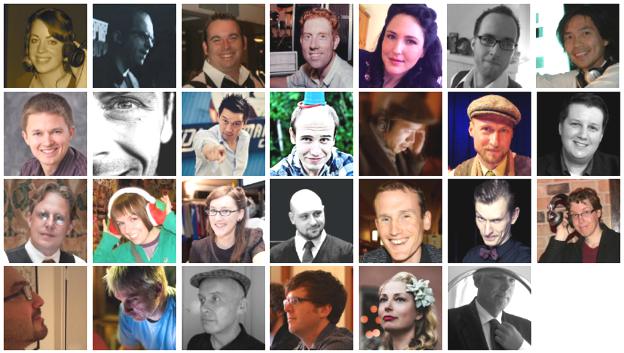


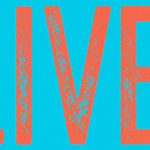
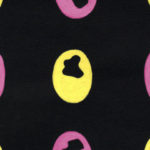
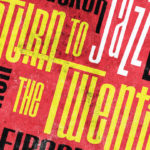
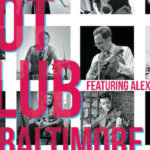
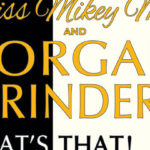
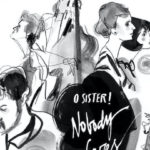
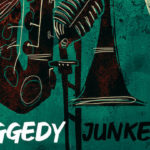

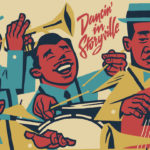
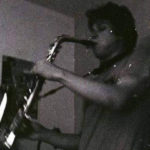
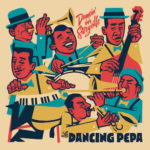


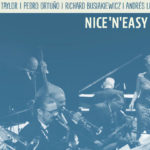
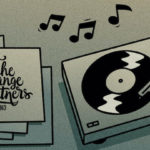
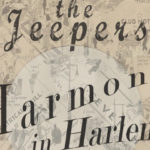
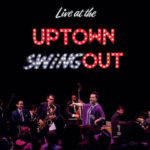

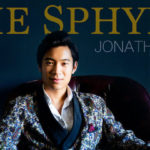
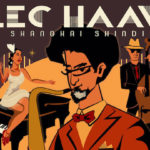
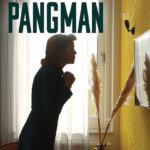

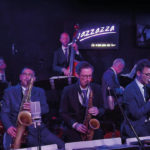
I am a firm believer that a DJ must watch the crowd very closely. You have all levels of dancers on the floor. Beginners usually don’t feel music unless it is in 4/4 time, and they play a big part in the future of swing dancing. Music in cut-time is much more difficult to understand unless you have been dancing for a while or grew up with this music. As far as styles of music, I think some good swingin’ blues(160-180 bpm) is great for beginners as well as more advanced dancers. Big band is always awesome. I don’t think most people are interested in a time period for the music, as long as they can dance, feel good, and most of all have fun.
Thanks for your comment, John. Most people might not be interested in a time period, but it’s our [Swing DJs] responsibility, that it swings – and this is by far still not the case.
Christian; We could carry on this conversation for a long spell which would lead into the study of music, time signatures, rhythm’s, etc. I would be interested in your short version of what makes a song a good swing song, and I would like to know what you mean when you say, “and this is by far still not the case”. We are probably very close in our thoughts, but I am just curious. Thanks so much and I look forward to hearing from you.
John, I guess I’m not able to describe that in a few words, what makes a song a good swing song to me. It’s easier to give you audible examples, so check out my series “DJ Chrisbe’s Song of the Week” [http://shuffleprojects.com/song-of-the-week/] and you get an idea what I consider good swing songs.
I experience quite often, that DJs play all kind of songs for swing dancers that that don’t swing. Of course you can dance Lindy Hop steps to all kind of music, but then I ask: Is it still Lindy Hop? Is it what we want?
I have been regularly DJ’ing for over 2 years both in local and international events and the comments below are based on my experience. Open your mind to different kinds of swing and step out of the big band convention. I have experienced that people do appreciate a mix of big band, NOLA, Gypsy and even electro swing when played in right proportions. Pay attention to the dance floor and see which tempo works for the crowd you play for and not the tempos you would love dancing to. Try not to play songs that are longer than 3.5 minutes (Bands anyway tend to go overboard with their solos and exhaust dancers). Another useful tip would be to pay attention to the band playing at the party and try to DJ in a style that differentiates you from the music played by the band. Last but not least, listen to jazz music whenever you get the chance and try to enjoy the music and not just play it when lindy hop calls !! 🙂
There were some comments that really fit to my dj-ing “philosophy”. So I think that its really important to match the songs style/mood-wise. Then I also try not to experiment too much, but also try hard not to play it too save and just play the same old tired classics. And yes, there is a reason why lindy hop was invented to the sound of big band jazz 🙂